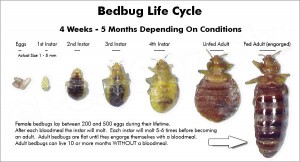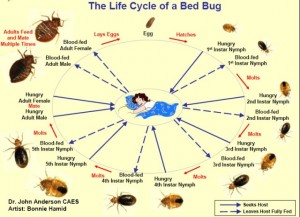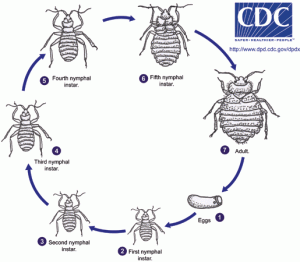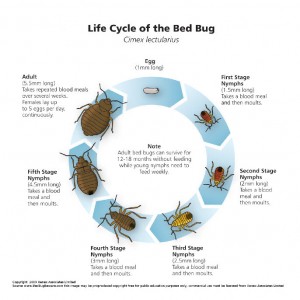Categories
- Bed Bug
- Bed Bug Cream
- BED BUG DATABASE
- Bed Bug Home Remedies
- Bed Bug Oil
- Bed Bug Remedies
- Bed Bug Spray
- Bed Bugs New York
- Bed Bugs Vancouver
- Bed Bugs World
- Bed Bugs American Samoa
- Bed Bugs Canada
- Bed Bugs Guam
- Bed Bugs North Mariana islands
- Bed Bugs Puerto Rico
- Bed Bugs United States
- Bed Bugs Alabama
- Bed Bugs Alaska
- Bed Bugs Arizona
- Bed Bugs Arkansas
- Bed Bugs California
- Bed Bugs Colorado
- Bed Bugs Connecticut
- Bed Bugs Delaware
- Bed Bugs Florida
- Bed Bugs Georgia
- Bed Bugs Hawaii
- Bed Bugs Idaho
- Bed Bugs Illinois
- Bed Bugs Indiana
- Bed Bugs Iowa
- Bed Bugs Kansas
- Bed Bugs Kentucky
- Bed Bugs Louisiana
- Bed Bugs Maine
- Bed Bugs Maryland
- Bed Bugs Massachusetts
- Bed Bugs Michigan
- Bed Bugs Minnesota
- Bed Bugs Mississippi
- Bed Bugs Missouri
- Bed Bugs Montana
- Bed Bugs Nebraska
- Bed Bugs Nevada
- Bed Bugs New Hampshire
- Bed Bugs New Jersey
- Bed Bugs New Mexico
- Bed Bugs New York
- Bed Bugs North Carolina
- Bed Bugs North Dakota
- Bed Bugs Ohio
- Bed Bugs Oklahoma
- Bed Bugs Oregon
- Bed Bugs Pennsylvania
- Bed Bugs Rhode Island
- Bed Bugs South Carolina
- Bed Bugs South Dakota
- Bed Bugs Tennessee
- Bed Bugs Texas
- Bed Bugs Utah
- Bed Bugs Vermont
- Bed Bugs Virgin Islands
- Bed Bugs Virginia
- Bed Bugs Washington
- Bed Bugs Washington DC
- Bed Bugs West Virginia
- Bed Bugs Wisconsin
- Bed Bugs Wyoming
- BedBug Removal
- BedBugs in Michigan
- Canada Bed Bugs
- Do it yourself Bed Bug
- Exterminator Bed Bugs
- Health
- Pest Inspection
- Toronto Bed Bugs
- Welcome to Bed Bugs
Registry Sites List
- Bronx Bed Bug Registry Infestation Maps, Residential And Hotel
- Brooklyn Bed Bug Registry Infestation Maps, Residential And Hotel
- Manhattan Bed Bug Registry Infestation Maps, Residential And Hotel
- Nyc Bed Bug Registry Infestation Maps, Residential And Hotel
- Queens Bed Bug Registry Infestation Maps, Residential And Hotel
- Staten Island Bed Bug Registry Infestation Maps, Residential And Hotel
Recommended Sites
- Home
- About us
- Bedbug Images
- Bedbug Information
- Bedbug Removal
- Bites
- BondHill
- California
- Carpet Tape
- Contact Us
- Control
- Detect
- DIY Bed Bugs
- Effectiveness
- Eggs & Nymphs
- Faq
- Find bedbugs
- Gallery
- Get A Quote
- Get Rid Of
- Hiding Places
- In hotels
- Infestation
- Info
- Inspection
- Kill Bed Bugs
- Library
- Life Cycle
- Location
- Look like
- Mattress Covers
- Occurance
- Origin
- Pillow Covers
- Preparation
- Prevent
- Prevention
- Products
- Sniffing Dogs
- Spring Covers
- Stop Spreading
- Symptoms
- Treatment
- Videos
- Wash Clothes
- Your Best Source – Bedbug Info & Extermination
- Bed Bug Info, Life Cycles & Facts
- Bed Bugs News
- Bed Bug Treatment & Removal
- About Bed Bugs Detroit
- Cities & Counties in Metro-Detroit with Bed Bugs
- Birmingham, Michigan. Pest Control Exterminators
- Canton Township, Michigan. Pest Control Exterminators
- Clinton Township, Michigan. Pest Control Exterminators
- Dearborn Heights, Michigan. Pest Control Exterminators
- Dearborn, Michigan. Pest Control Exterminators
- Detroit, Michigan. Pest Control Exterminators
- Farmington Hills, Michigan. Pest Control Exterminators
- Farmington, Michigan. Pest Control Exterminators
- Ferndale, Michigan. Pest Control Exterminators
- Grosse Pointe, Michigan. Pest Control Exterminators
- Livonia, Michigan. Pest Control Exterminators
- Macomb Township, Michigan. Pest Control Exterminators
- Novi, Michigan. Pest Control Exterminators
- Pontiac, Michigan. Pest Control Exterminator
- Redford, Michigan. Pest Control Exterminator
- Rochester Hills, Michigan. Pest Control Exterminator
- Royal Oak, Michigan. Pest Control Exterminator
- Shelby Township, Michigan. Pest Control Exterminator
- Southfield, Michigan. Pest Control Exterminator
- St Clair Shores, Michigan. Pest Control Exterminator
- Sterling Heights, Michigan. Pest Control Exterminator
- Taylor, Michigan. Pest Control Exterminator
- Troy, Michigan. Pest Control Exterminator
- Warren, Michigan. Pest Control Exterminator
- Waterford Township, Michigan. Pest Control Exterminator
- West Bloomfield, Michigan. Pest Control Exterminator
- Westland, Michigan. Pest Control Exterminator
- Get A Free Quote
- About BedBugs
- Home
- Bed Bug
- Bed Bug Cream
- BED BUG DATABASE
- Bed Bug Home Remedies
- Bed Bug Oil
- Bed Bug Remedies
- Bed Bug Spray
- Bed Bugs New York
- Bed Bugs Alabama
- Bed Bugs Alaska
- Bed Bugs Arizona
- Bed Bugs Arkansas
- Bed Bugs California
- Bed Bugs Colorado
- Bed Bugs Connecticut
- Bed Bugs Delaware
- Bed Bugs Florida
- Bed Bugs Georgia
- Bed Bugs Hawaii
- Bed Bugs Idaho
- Bed Bugs Illinois
- Bed Bugs Indiana
- Bed Bugs Iowa
- Bed Bugs Kansas
- Bed Bugs Kentucky
- Bed Bugs Louisiana
- Bed Bugs Maine
- Bed Bugs Maryland
- Bed Bugs Massachusetts
- Bed Bugs Michigan
- Bed Bugs Minnesota
- Bed Bugs Mississippi
- Bed Bugs Missouri
- Bed Bugs Montana
- Bed Bugs Nebraska
- Bed Bugs Nevada
- Bed Bugs New Hampshire
- Bed Bugs New Jersey
- Bed Bugs New Mexico
- Bed Bugs New York
- Bed Bugs North Carolina
- Bed Bugs North Dakota
- Bed Bugs Alberta
- Bed Bugs British Columbia
- Bed Bugs Manitoba
- Bed Bugs New Foundland & Labrador
- Bed Bugs Newbrunswick
- Bed Bugs American Samoa
- Bed Bugs Canada
- Bed Bugs Guam

Pages
- About Bed Bugs Detroit
- About BedBugs
- About us
- Bed Bug Info, Life Cycles & Facts
- Bed Bug Treatment & Removal
- Bed Bugs News
- Bedbug Images
- Bedbug Information
- Bedbug Removal
- Bites
- BondHill
- California
- Carpet Tape
- Cities & Counties in Metro-Detroit with Bed Bugs
- Birmingham, Michigan. Pest Control Exterminators
- Canton Township, Michigan. Pest Control Exterminators
- Clinton Township, Michigan. Pest Control Exterminators
- Dearborn Heights, Michigan. Pest Control Exterminators
- Dearborn, Michigan. Pest Control Exterminators
- Detroit, Michigan. Pest Control Exterminators
- Farmington Hills, Michigan. Pest Control Exterminators
- Farmington, Michigan. Pest Control Exterminators
- Ferndale, Michigan. Pest Control Exterminators
- Grosse Pointe, Michigan. Pest Control Exterminators
- Livonia, Michigan. Pest Control Exterminators
- Macomb Township, Michigan. Pest Control Exterminators
- Novi, Michigan. Pest Control Exterminators
- Pontiac, Michigan. Pest Control Exterminator
- Redford, Michigan. Pest Control Exterminator
- Rochester Hills, Michigan. Pest Control Exterminator
- Royal Oak, Michigan. Pest Control Exterminator
- Shelby Township, Michigan. Pest Control Exterminator
- Southfield, Michigan. Pest Control Exterminator
- St Clair Shores, Michigan. Pest Control Exterminator
- Sterling Heights, Michigan. Pest Control Exterminator
- Taylor, Michigan. Pest Control Exterminator
- Troy, Michigan. Pest Control Exterminator
- Warren, Michigan. Pest Control Exterminator
- Waterford Township, Michigan. Pest Control Exterminator
- West Bloomfield, Michigan. Pest Control Exterminator
- Westland, Michigan. Pest Control Exterminator
- Contact Us
- Control
- Detect
- DIY Bed Bugs
- Effectiveness
- Eggs & Nymphs
- Faq
- Find bedbugs
- Gallery
- Get A Free Quote
- Get A Quote
- Get Rid Of
- Hiding Places
- In hotels
- Infestation
- Info
- Inspection
- Kill Bed Bugs
- Library
- Life Cycle
- Location
- Look like
- Mattress Covers
- Occurance
- Origin
- Pillow Covers
- Preparation
- Prevent
- Prevention
- Products
- Sniffing Dogs
- Spring Covers
- Stop Spreading
- Symptoms
- Treatment
- Videos
- Wash Clothes
- Your Best Source – Bedbug Info & Extermination
-
Recent Posts
- Traveler Shares Video of Disgusting Bed Bugs in a Missouri Motel – KHMO News-Talk-Sports
- Im an Entomologist. Heres How I Avoid Bed Bugs When I Travel – Self
- Arkansas Towns Make The Top 50 Infested With Bed Bugs – kkyr.com
- Bed bugs: Expert reveals tell-tale sign to know if you’ve been bitten – Yahoo News UK
- ‘The size of an apple seed’: How to protect your family from bed bugs during summer travel – WKBW 7 News Buffalo
- A man held in a disgusting Georgia jail cell died after being ‘eaten alive’ by insects and bed bugs, his family says – Yahoo Lifestyle UK
- DC ranks among the worst cities for bed bugs, new data says – WUSA9.com
- 13 Massachusetts Cites Named on 2024’s Worst Cities for Bed Bugs List – Live 95.9
- 6 Ohio Cities Are Infested with Bed Bugs in 2024 – wkfr.com
- Bed Bugs – AZ Animals
September 2024 M T W T F S S 1 2 3 4 5 6 7 8 9 10 11 12 13 14 15 16 17 18 19 20 21 22 23 24 25 26 27 28 29 30














